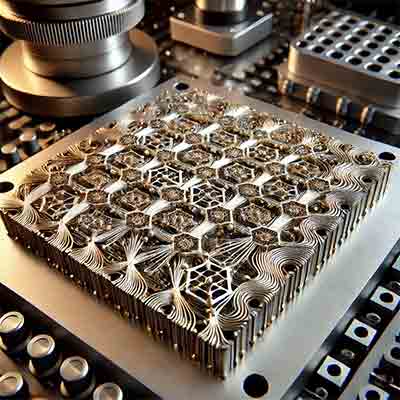Superconductive Quantum Devices
A Quantum Devices Fabrication Scientist Requested the following quote:
I am looking for sapphire substrate with the following specifications: c-cut (0001), 2 inch diameter, 430um thickness, 2-side polished.
Could you please give me a quote and estimated arrival time for 25 substrates? and if you have them available could you please send me the data sheet?
Reference #237646 for specs and pricing.
Get Your Silicon Wafer Quote FAST! Or, Buy Online and Start Researching Today!
What Substrates Are Used To Fabricate Quantum Devices?
Quantum devices are fabricated using a variety of substrates, depending on the specific type of device and its intended application. Here are some common substrates used in the fabrication of quantum devices:
-
Silicon (Si):
- Widely used in the semiconductor industry.

- Silicon-based substrates are popular for quantum dot devices, spin qubits, and other silicon-based quantum devices.
- Compatible with existing CMOS technology.
-
Sapphire (Al2O3):
- Commonly used for superconducting qubits, such as those in superconducting circuits and transmon qubits.
- Provides good electrical insulation and has low microwave losses.
-
Silicon Carbide (SiC):
- Used for quantum devices involving color centers, such as silicon vacancies or divacancies.
- Has favorable properties for hosting spin qubits and optoelectronic applications.
-
Gallium Arsenide (GaAs):
- Used in the fabrication of quantum dots and heterostructures for applications like quantum Hall effect devices and spin qubits.
- Offers high electron mobility.
-
Diamond:
- Used for devices involving nitrogen-vacancy (NV) centers.
- NV centers in diamond are used for quantum sensing, quantum communication, and quantum computing applications.
-
Strontium Titanate (SrTiO3):
- Used in the fabrication of oxide-based quantum devices.
- Known for its high dielectric constant and superconducting properties at low temperatures.
-
Indium Phosphide (InP):
- Used for quantum dot devices and optoelectronic quantum devices.
- Offers high electron mobility and is suitable for high-speed electronic and photonic applications.
-
Graphene and Other 2D Materials:
- Used for various quantum devices due to their unique electronic, optical, and mechanical properties.
- Includes materials like molybdenum disulfide (MoS2) and tungsten diselenide (WSe2).
Each substrate has its unique properties that make it suitable for specific types of quantum devices. The choice of substrate depends on factors such as the desired electronic properties, compatibility with other materials, and the specific quantum phenomena being exploited.

